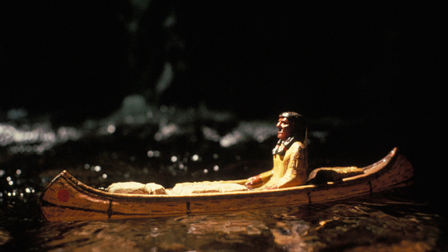In our continuing investigation into EcoJustice Literacy, we’re asking teachers and students to reflect on the following questions about the classic story, Paddle-To-The-Sea:
- How could you discuss the journey from upstream to downstream when talking about how we live with water in the Great Lakes in the context of this story?
- What discussion points (like water quality, Indiginous water rights, cultural use of waterways) would you use to talk about both history and ecology of the Great Lakes?
- How are we all connected and impacted by human settlement across the Great Lakes watershed?
Some of these questions are answered in the story of one little boy’s dreams of a canoe adventure throughout the lakes. In this short story by C. H. Holling, a young Indian boy carves a little canoe with a figure inside and names him Paddle-to-the-Sea. Paddle’s journey, in text and pictures, through the Great Lakes to the Atlantic Ocean provides an excellent geographic and historical picture of the region. His journey takes him from the Nipigon River, to the iron ore shores of Deluth, to stormy Whitefish Bay, through the locks at Sault St. Marie. From there, he boards ships to Gary Indiana, through Mackinac Straights, onward through the industrial centers of Detroit, Cleveland and Buffalo. He even goes over Niagara falls and through the 1,000 island all the way through the St. Lawrence Seaway. Along the way, Paddle sees how man and creatures use the land and its bounty. His journeys take him from logging operations to beaver dams, from fisherman to sea birds, from iron and copper mining to the factories that make automobiles and the great plains grains shipped to silos throughout the Great Lakes.
Interest level is 3-5 and the genre is adventure and general fiction. Reading level grade equivalence 4.5. (Book Wizard, 2014). In the study of ecojustice education, the native tribes of the Great Lakes form an integral part of the study of the Great Lakes and its efforts of conservation. This book could help students understand that connection that exists between the past, the present and the future among different cultural groups. In the next Common Room blog, we’ll have more resources on how to understand current issues and resources in the fight to save our Great Lakes heritage. Please use this book and blog as a starting point for discussion around Great Lakes topics between SEMIS PD days!
*Thank you to Linda Williams and past Ecojustice Education graduate students for their work on compiling the book reviews for this blog!*

